-
Friday, 11 December 2020 – 7pm/ Sabatini Building, Auditorium
Session 1. First session. Filming Performance
Narcisa Hirsch
Marabunta (Swarm)
Filming and editing by Raymundo Gleyzer. Lead roles: Narcisa Hirsch, Marie Louise Alemann and Walther Mejía
Argentina, 1967, b/w, sound, 16 mm transferred to digital, 7’55’’Muñecos (Dolls)/Have a Baby
Argentina, USA and UK, 1972, colour, silent, Super-8 transferred to digital, 15’31’’Manzanas (Apples)
Argentina, 1973, colour, original version in Spanish, 16 mm transferred to digital, 4’La noche bengalí (The Bengali Night), co-directed with Werner Nekes
Argentina, 1980, colour, silent, 16 mm transferred to digital, 6’30’’Testamento y vida interior (Testament and Inner Life)
Argentina, 1976, colour, sound, video transferred to digital, 10’38’’Retrato de una artista como ser humano (Portrait of a Woman Artist as a Human Being)
Argentina, 1973, colour, sound, video transferred to digital, 15’51’’Narcisa Hirsch’s first incursions into film were to record her performances and happenings in public spaces. Collective actions, first shot in Super-8 and 16 mm, and later in video, in which Hirsch and the group of artists she worked with sought a different, more direct relationship with a spectator found randomly. These early works also reveal themes the artist would develop across her film work: the mystery of birth and death and our relationship to nature.
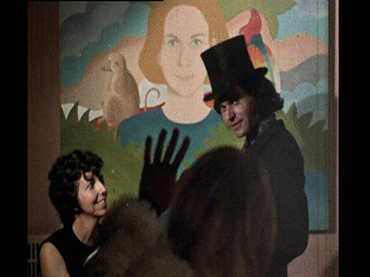
-
Saturday, 12 December 2020 – 5pm / Sabatini Building, Auditorium
Session 2. Landscape and Experience
Narcisa Hirsch
Rumi
Argentina, 1995–1999, colour, sound, 16 mm transferred to digital, 27’A-Dios
Argentina, 1989, colour, sound, Super-8 transferred to digital, 22’Patagonia 2
Argentina, 1976, colour, sound, Super-8 transferred to digital, 9’56’’Patagonia takes centre stage and is at the heart of Narcisa Hirsch’s film work as a space of natural encounter, of union between body and the eternal, of dialogue between elements that are at once intimate and immense. This second session in the series includes some of the films in which the film-maker explores Patagonian landscapes and develops her relationship with them.
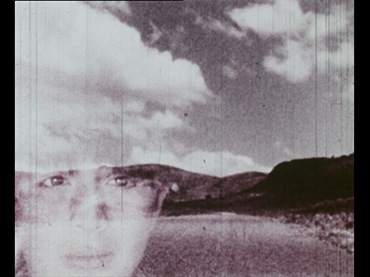
-
Sunday, 13 December 2020 – 12:30pm / Sabatini Building, Auditorium
Session 3. Experiments with Experimentation
Narcisa Hirsch
Taller (Workshop)
Argentina, 1971, colour, original version in Spanish, 16 mm transferred to digital, 10’Come out
Argentina, 1971, colour, sound, 16 mm transferred to digital, 11’Ama-zona
Argentina, 1983, colour, sound, Super-8 transferred to digital, 10’38’’Canciones napolitanas (Neapolitan Songs)
Argentina, 1971, colour, sound, 16 mm transferred to digital, 10’Aleph
Argentina, 2005, colour, original version in Spanish, Betacam SP transferred to digital, 1’Myst
Argentina, 2019, colour, original version in Spanish and English, video transferred to digital, 15’This third session more clearly expounds the relation Narcisa Hirsch’s work bears to many of the ideas and currents in experimental film: from structural cinema to more sensorial and poetic film-making via abstraction. In these works, we witness Hirsch explore different paths in the experimental genre, making them hers and bringing them closer to her idiosyncratic themes: the feminine body, Argentinian tradition, landscape and nature.
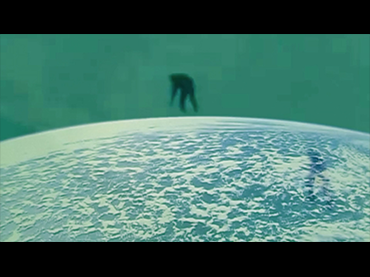

Held on 11 dic 2020
Narcisa Hirsch is one of the foremost figures in the history of Latin American and international experimental film. Born in Germany in 1928, and living in Argentina since her childhood, her name has lurked in the shadows unduly, owing to a twofold “eccentricity”: being a woman and making films that lie outside central spaces constructing the history of this filmic modality: the United States and Europe.
Yet this binary, off-centre state has not stopped her from being mindful of world movements in experimental film and video art. Her own work, at once domestic and mystical, is related to canonical films and figures from video and experimental art as it constantly shuns imitation and vindicates film as a space of freedom. In Hirsch’s own words: “The freedom of working to a really tight budget is the freedom of not having to sell; the freedom of working in a way that is DIY and artisan, without big teams or stages. I don’t rush either. One frame per day, or one per year. Everyone chooses their time and space, and it’s because of that and everything else that experimental film is a subversive art, more than documentary or political film. More subversive than intellectual or conceptual film. That’s why few go and fewer still remain”.
Hirsch’s first foray into art was as a painter and draughtswoman in the 1960s, before suddenly leaping into public space, staging happenings in the search for a new kind of spectator. Understanding film and creation as a collective process of work and thought, she has built, since the start of her career, a sturdy community around her filmic and artistic practice, a wide-ranging network of experimental artists and film-makers who came together through the Union of Small-Gauge Film-makers (UNCIPAR), around the Goethe Institute and Di Tella Institute, originally comprising figures such as Marie Louise Alemann, Claudio Caldini, Jorge Honik, Juan José Mugni, Horacio Vallereggio and Juan Villola, who are all, ultimately, key to the formation of Argentina’s independent and experimental scene. A network and solid conception of collectiveness that remains today, and, even at the age of ninety-two, Hirsch holds weekly encounters (in-person before the pandemic, now online) with an extensive network of young film-makers and aficionados of experimental cinema that embrace her work.
This retrospective is made up of three sessions reflecting some of the must-see pictures in her film oeuvre, made from the 1960s onwards. These works, chosen to engage in dialogue with the film-maker, illuminate spiritual and existential themes: love, birth, death, eroticism and feminine power, orbiting around the materiality of the body. In Narcisa Hirsch’s work domestic scenes and landscapes of inner-city and outlying areas of Buenos Aires and Patagonia function as an amplification of an exploration that is both formal and personal: the body, the eternal, the inside, the outside, movement, that which remains, intimacy and collectivity.
This programme is framed inside a joint project between Museo Reina Sofía and Documenta Madrid, an international film festival promoted by Madrid’s City Council and returning this year, in 2020, in a hybrid format combining in-person and online formats.
Curators
Cecilia Barrionuevo, in collaboration with Narcisa Hirsch
Acknowledgements
Daniela Muttis and Tomás Rautenstrauch (the Narcisa Hirsch Cinematheque)
Organised by
Museo Reina Sofía and Documenta Madrid (17th International Film Festival)


Admission: Free, until full capacity is reached, with prior ticket collection on the Museo Reina Sofía website from 10am on the last working day before the activity. A maximum of 1 per person. Doors open 30 minutes before screenings
Más actividades

Oliver Laxe. HU/هُوَ. Dance as if no one were watching you
Tuesday, 16 December 2025 – 7pm
As a preamble to the opening of the exhibition HU/هُوَ. Dance as if no one were watching you, film-maker Oliver Laxe (Paris, 1982) engages in conversation with the show’s curators, Julia Morandeira and Chema González, touching on the working processes and visual references that articulate this site-specific project for the Museo Reina Sofía. The installation unveils a new programme in Space 1, devoted from this point on to projects by artists and film-makers who conduct investigations into the moving image, sound and other mediums in their exhibition forms.
Oliver Laxe’s film-making is situated in a resilient, cross-border territory, where the material and the political live side by side. In HU/هُوَ. Dance as if no one were watching you, this drift is sculpted into a search for the transcendency that arises between dancing bodies, sacred architectures and landscapes subjected to elemental and cosmological forces. As a result, this conversation seeks to explore the relationship the piece bears to the imagery of ancient monotheisms, the resonance of Persian Sufi literature and the role of abstraction as a resistance to literal meaning, as well as looking to analyse the possibilities of the image and the role of music — made here in collaboration with musician David Letellier, who also works under the pseudonym Kangding Ray — in this project.
These inaugural conversations, part of the main working strands of the Museo’s Public Programmes Area, aim to explore in greater depth the exhibition narratives of the shows organised by the Museo from the perspective of artists, curators and specialists.
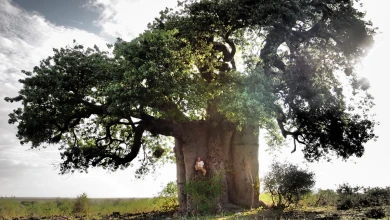
Francisco López and Barbara Ellison
Thursday, 11 December - 8pm
The third session in the series brings together two international reference points in sound art in one evening — two independent performances which converse through their proximity here. Barbara Ellison opens proceedings with a piece centred on the perceptively ambiguous and the ghostly, where voices, sounds and materials become spectral manifestations.
This is followed by Francisco López, an internationally renowned Spanish sound artist, who presents one of his radical immersions in deep listening, with his work an invitation to submerge oneself in sound matter as a transformative experience.
This double session sets forth an encounter between two artists who, from different perspectives, share the same search: to open ears to territories where sound becomes a poetic force and space of resistance.
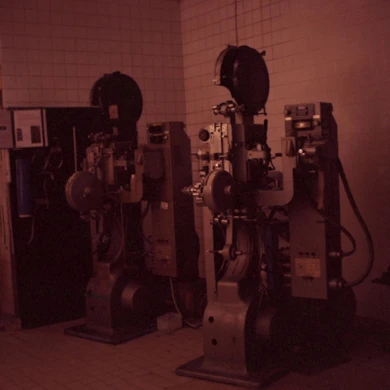
Long Live L’Abo! Celluloid and Activism
4, 5, 6 DIC 2025
L’Abominable is a collective film laboratory founded in La Courneuve (Paris, France) in 1996. It came into being in response to the disappearing infrastructures in artisan film-making and to provide artists and film-makers with a self-managed space from which to produce, develop and screen films in analogue formats such as Super 8, 16mm and 35mm. Anchored in this premise, the community promotes aesthetic and political experimentation in analogue film opposite digital hegemony. Over the years, L’Abominable, better known as L’Abo, has accompanied different generations of film-makers, upholding an international movement of independent film practices.
This third segment is structured in three sessions: a lecture on L’Abo given by Pilar Monsell and Camilo Restrepo; a session of short films in 16mm produced in L’Abo; and the feature-length film Une isle, une nuit, made by the Les Pirates des Lentillères collective.
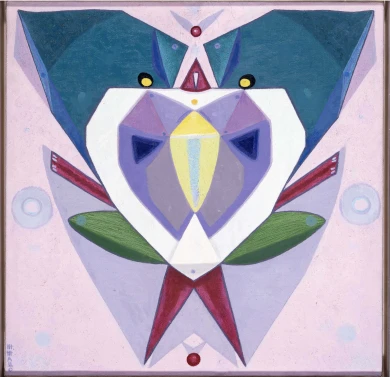
Estrella de Diego Lecture. Holding Your Brain While You Sleep
Wednesday, 3 December 2025 – 7pm
Framed inside the Museo Reina Sofía’s retrospective exhibition devoted to Maruja Mallo, this lecture delivered by Estrella de Diego draws attention to the impact of the artist’s return to Spain after her three-decade exile in Latin America.
Committed to values of progress and renewal in the Second Republic, Mallo was forced into exile to Argentina with the outbreak of the Civil War and would not go back to Spain to settle definitively until 1965 — a return that was, ultimately, a second exile.
Mallo saw out her prolific artistic trajectory with two impactful series: Moradores del vacío (Dwellers of the Void, 1968–1980) and Viajeros del éter (Ether Travelers, 1982), entering her most esoteric period in which she drew inspiration from her “levitational experiences” of crossing the Andes and sailing the Pacific. Her travels, both real and imaginary, became encounters with superhuman dimensions.
In parallel, her public persona gained traction as she became a popular figure and a key representative of the Generation of ‘27 — the other members of which also started returning to Spain.
This lecture is part of the Art and Exile series, which seeks to explore in greater depth one of the defining aspects of Maruja Mallo’s life and work: her experience of exile. An experience which for Mallo was twofold: the time she spent in the Americas and her complex return to Spain.
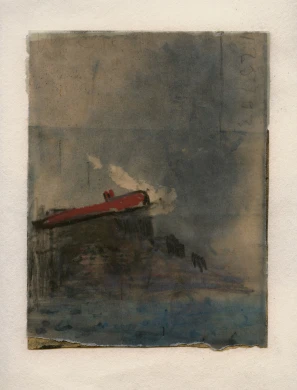
Juan Uslé. That Ship on the Mountain
Tuesday, 25 November 2025 – 7pm
Ángel Calvo Ulloa, curator of the exhibition Juan Uslé. That Ship on the Mountain, engages in conversation with artist Juan Uslé (Santander, 1954) in the Museo’s Auditorium 400 to explore in greater depth the exhibition discourse of this anthological show spanning four decades of Uslé’s artistic career.
The show casts light on the close relationship Uslé’s work bears to his life experiences, establishing connections between different stages and series which could ostensibly seem distant. Framed in this context, the conversation looks to explore the artist’s personal and professional journey: his memories, experiences of New York, his creative process, conception of painting, and ties with photography and film, and the cohesiveness and versatility that characterise his art. Key aspects for a more in-depth understanding of his artistic sphere.
The conversation, moreover, spotlights the preparatory research process that has given rise to this exhibition to grant a better understanding of the curatorial criteria and decisions that have guided its development.
These inaugural conversations, part of the main working strands of the Museo’s Public Programmes Area, aim to explore in greater depth the exhibition narratives of the shows organised by the Museo from the perspective of artists, curators and specialists.



![Miguel Brieva, ilustración de la novela infantil Manuela y los Cakirukos (Reservoir Books, 2022) [izquierda] y Cibeles no conduzcas, 2023 [derecha]. Cortesía del artista](https://recursos.museoreinasofia.es/styles/small_landscape/public/Actividades/ecologias_del_deseo_utopico.jpg.webp)
![Ángel Alonso, Charbon [Carbón], 1964. Museo Reina Sofía](https://recursos.museoreinasofia.es/styles/small_landscape/public/Actividades/perspectivas_ecoambientales.jpg.webp)